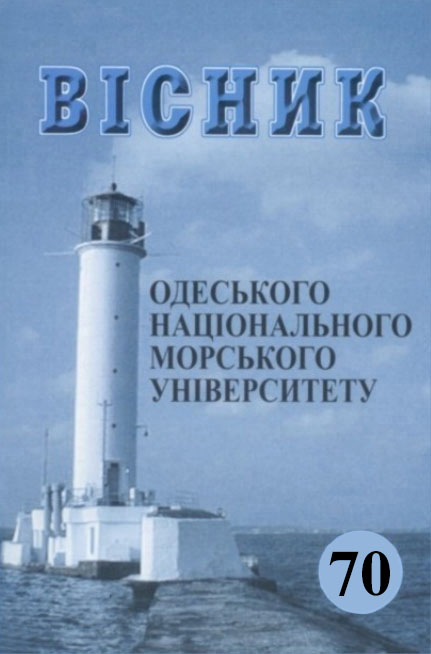Study of forebody shape effect on ship resistance in still water and in waves
Main Article Content
Abstract
Design and optimization of ship hull form for minimizing resistance and satisfying other project requirements is a well-known problem of naval architecture. A suggested method of hull form design and optimization uses CFD analysis for evaluation of resistance responses to systematic transformations of hull surface. The transformations at first are set on curves of sectional areas and then are applied to corresponding regions of hull surfaces according to special techniques of rebuilding. Each separate transformation corresponds to a new version of hull form with transformed region of surface. These versions are used in CFD simulations for evaluation of resistance changes in still water, which are at the heart of optimization procedures. As a result, an optimal form of sectional area curve expressing an optimal longitudinal distribution of constant hull volume and, eventually, an optimized shape of hull surface can be obtained. The method was applied to forebodies of two ships including the well-known KCS hull form and showed promising results. This paper describes some further improvements of the method performed after analysis of its reliability and practical features. It is shown that accuracy can be noticeably improved based on analysis of grid convergence. Significantly higher detailing and flexibility of transformations can be achieved through setting overlapping regions on initial hull form. In addition, the optimization results obtained in still water were assessed with respect to resistance in waves. It turned out that the applied changes of the KCS hull form have no perceptible effect on resistance in head regular and irregular waves
Article Details
References
2. Hogner E. (1936). Influence lines for the wave resistance of ships. Proc. of the Royal society A: mathematical, physical and engineering sciences, 155, 292-301.
3. Haichao C., Xide C., Zuyuan L., Baiwei F. & Chengsheng Z. (2016). Sample selection method for ship resistance performance optimization based on approximated model. Journal of Ship Research, 60 (1), 1-13. DOI: 10.5957/JOSR.60.1.140047
4. Legović D. & Dejhalla R. (2015). Numerical hydrodynamic optimization of a tanker hull form. Proc. of 16th Int. Congress of IMAM (IMAM 2015): Towards green marine technology and transport (pp. 75-82). – London (UK): CRC Press. DOI: 10.1201/b18855
5. Pechenyuk A. V. (2016). The method of optimum foreship transformation in the problem of total resistance decreasing in the still water. Zbirnyk naukovykh prats NUK, 2, 40-45 [in Russian].
6. Lackenby H. (1950). On the systematic geometrical variation of ship forms. RINA Transactions, 289–316.
7. Davydov I.P. & Pechenyuk A.V. (2016). About practical significance and reliability of the results obtained by the method of optimum foreship transformation. Zbirnyk naukovykh prats NUK, 3, 3-10 [in Russian].
8. Larsson L., Stern F. & Bertram V. (2003). Benchmarking of computational fluid dynamics for ship flows: the Gothenburg 2000 Workshop. Journal of Ship Research, 47 (1), 63-81. DOI: 10.5957/jsr.2003.47.1.63
9. Aksenov A.A., Zhluktov S.V., Silaev D.P., Kharchenko S.A., Ilyin V.A., Pechenyuk A.V., Ryabinkin E.A. et al. (2017). Investigating the Problems of Ship Propulsion on a Supercomputer. Proc. of Ivannikov ISPRAS Open Conference (ISPRAS-2017) (pp. 124-132). – Los Alamitos (USA): IEEE.
10. Gerritsma J. & Beukelman W. (1972) Analysis of the Resistance Increase in Waves of a Fast Cargo Ship. International shipbuilding progress, 19 (217).
11. Guliev J.M. & Davidov I.F. & Elis J.M. (1984). System of Computer Programs for Prediction of Seakeeping Qualities of Ships and Marine Structure. Proc. 13th Session SMSSH, 1 (33).
